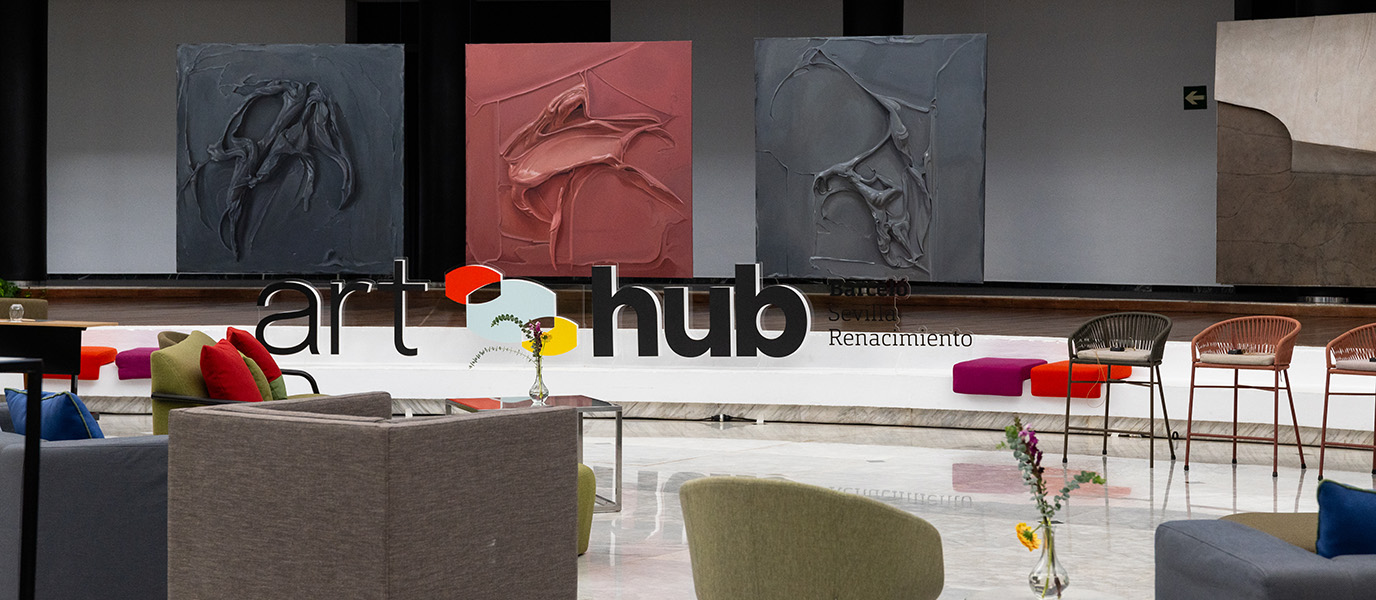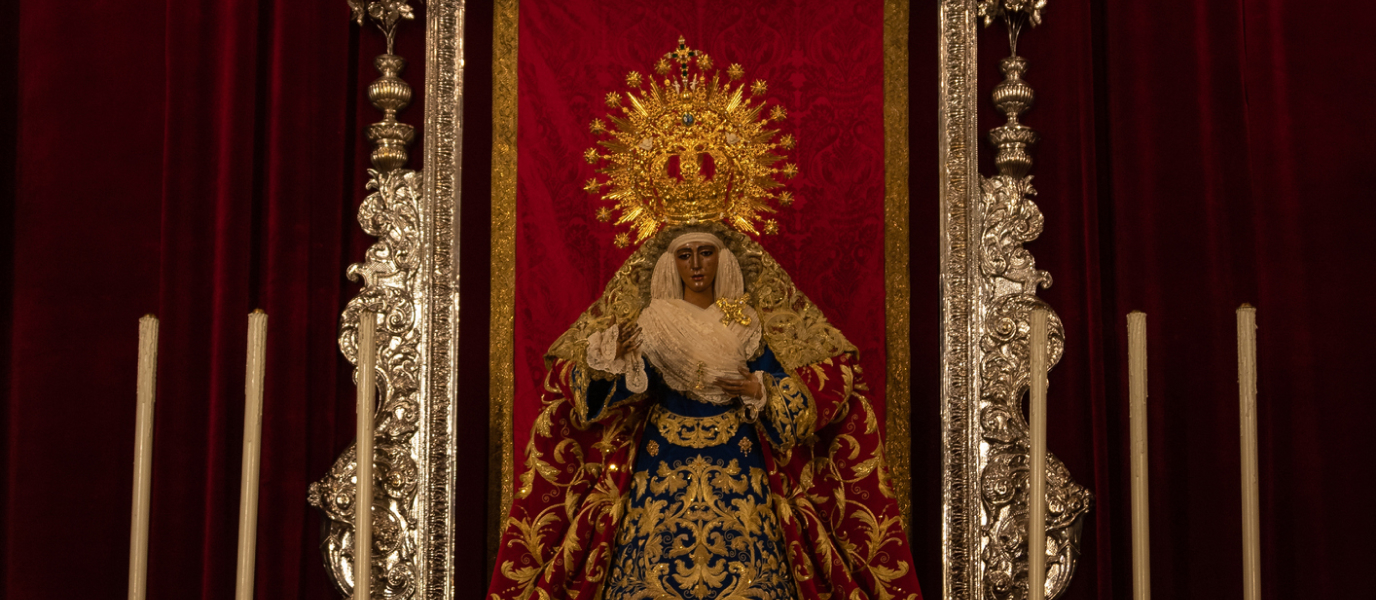Opened in March 2017, CaixaForum Sevilla is one of the most recent additions to the Obra Social network that La Caixa has all over Spain. The space, located in the capital of Andalusia, is housed within the iconic Seville Tower, designed by the renowned architect César Pelli. The aim of the museum, as with others, is to promote knowledge for all ages.
The physical space of CaixaForum Sevilla
Although three possible locations were initially put forward for the cultural space, Seville Tower, situated on the Island of La Cartuja, was eventually chosen. CaixaForum Seville is housed in the Pódium building, which belongs to the complex of the aforementioned iconic tower. It has a surface area of 7,500 square metres, which has been divided into two exhibition rooms, an auditorium, two multi-purposes rooms, a shop and bookshop and a cafeteria.
The architect responsible for adapting the existing building for its new function as an educational museum was Guillermo Vázquez Consuegra. The architect hailing from Seville devised a unique way to transform the space by creating a marquee, made from aluminium foam, through which the centre is accessed. In 2018 the project of Vázquez Consuegra was awarded at the annual Building of the Year Awards of the internationally-renowned architecture website Archdaily.
Thanks to the project of Vázquez Consuegra, which cost 18 million euros, visitors enter CaixaForum Sevilla by way of the marquee. The curved canopy has a dual function: firstly, aesthetic, as it gives the building a modern look, and, secondly, functional, since it allows light to enter underground floors. Some interior designers compare the type of diffused light that filters through the canopy with the light that shines through the stained glass windows of Gothic cathedrals.
On the first floor are administrative offices and the restaurant, and the exhibition rooms and the auditorium are located on the lower ground floor, that is, underneath the plaza that the centre opens out onto, which was once the former car park and offices of the Pódium building. Much like in other CaixaForum buildings in Spain, former uses have not been hidden but rather made the most out of. The centre also offers guided tours, which we recommend you don’t miss.
Art and education
The network of CaixaForum centres currently spans seven Spanish cities and operates with a common goal: to offer a meeting space for citizens, where they can access the latest developments in culture. Families especially benefit as children can enjoy a wide range of workshops and guided tours on weekends.
The temporary exhibitions at CaixaForum are highly varied in terms of chronology (ancient, modern and contemporary art) and themes, from plastic arts to science. Exhibitions are usually combined with other activities such as film and documentary screenings. Cultural exchanges are also an integral part in the form of conferences, debates on pressing societal issues and themed discussion groups.
The price of activities and workshops is usually economical, which means cost won’t hinder you from enjoying its extensive programme. We recommend consulting the availability of workshops and concerts in advance as they are usually in high demand.
Isla de La Cartuja
CaixaForum Sevilla is situated on the well-known Isla de La Cartuja, named as such because of La Cartuja Monastery, which houses the Andalusian Centre for Contemporary Art. Whilst you’re there, make the most of your time to visit the museum and the magnificent building that it is housed within. Close by is also the Navigation Pavilion, built for Seville’s 1992 Universal Exposition, which has served as a museum since 2012. In its rooms you will discover everything to do with maritime history and scientific expeditions. It also organises workshops and camps for children.
Other museums in Seville
The Museum of Fine Arts is located in the historic centre and perfectly complements CaixaForum Sevilla if you want to get to know the work of Seville’s masters. It is located in the former Convent of the Order of the Merced Calzada de la Asunción, an excellent example of Andalusian Mannerism, and boasts 13 exhibition rooms. In addition to the monumental character of the building, which is formed around various courtyards and cloisters, it houses numerous works by the Sevillian painter Murillo, as well as Zurbarán, Goya, El Greco and Ribera.
Culture in Seville also comes in the form of other spaces of interest such as the Museum of Flamenco and the museum situated in the La Maestranza Bullring. Both are a perfect addition to any trip to Seville, a city that lives and breathes flamenco as an intrinsic part of its character. If you get the chance, be sure to catch a show at a flamenco tablao.





































































